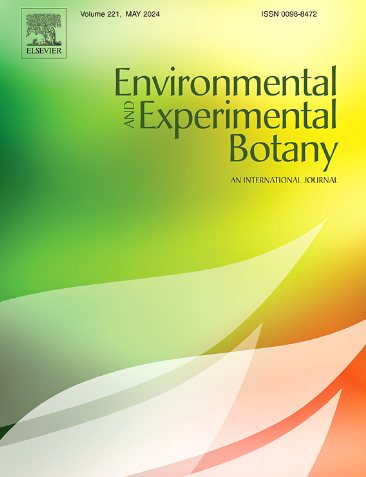秦岭中部湿润坡地油松对干旱的适应性水力策略
IF 4.7
2区 生物学
Q2 ENVIRONMENTAL SCIENCES
引用次数: 0
摘要
了解树木生长对气候变化的响应机制对于预测温带地区未来森林动态具有重要意义。然而,树木在水分胁迫下调节其水力结构、生长和生理的机制及其对不同水分环境下径向生长和冠层动力学的影响尚不清楚。本文利用解剖学指标(理论水力导率(Kh)、细胞壁厚度和导管壁增强(CWR))、树轮宽度和δ13C分析得出的内在水分利用效率(iWUE),研究了中国中部秦岭干湿斜坡上油松(Pinus tabulformis)木质部适应气候变化的策略。在干湿斜坡上观察到不同的干旱调整策略。干燥坡上的树木表现出较高的Kh和较低的CWR的相对获取策略。而湿坡上的树木则采取相对保守的策略,Kh值较低,CWR较高。随着干旱严重程度的增加,树木的iWUE增加,这有可能加强水力效率和安全指标对降水的响应。解剖结构和iWUE对不同生长阶段树木年轮宽度和植被指数的影响存在差异。在水分条件不利的情况下,提高iWUE不能阻止径向生长的下降。这些发现为油油树适应温带环境变化的生理机制提供了基础,突出了气候、解剖生理指标和生长动力学之间的复杂相互作用。本文章由计算机程序翻译,如有差异,请以英文原文为准。
Adaptive hydraulic strategies of Pinus tabuliformis to drought across moisture-level slopes in the central Qinling Mountains, China
Understanding the response mechanism of tree growth to climate change is essential for predicting future forest dynamics in temperate regions facing significant warming and drying situations. However, the mechanisms by which trees adjust their hydraulic structure, growth and physiology in response to water stress and their effects on radial growth and canopy dynamics across different moisture environments remain poorly understood. We investigate the strategies employed by Pinus tabuliformis on dry and wet slopes of the central Qinling Mountains in China to adapt their xylem to climate variability, using anatomical indicators (theoretical hydraulic conductivity (Kh), cell wall thickness, and conduit wall reinforcement (CWR)), tree-ring width and intrinsic water-use efficiency (iWUE) derived from δ13C analyses. Contrasting drought adjustment strategies were observed on dry and wet slopes. Trees on the drier slope deployed a relatively acquisitive strategy characterized by higher Kh and lower CWR. In contrast, trees on wetter slopes adopted a relatively conservative strategy with lower Kh and higher CWR. Under increasing drought severity, trees demonstrated a rise in iWUE, which has the potential to strengthen the response of hydraulic efficiency and safety indicators to precipitation. Moreover, anatomical structure and iWUE differentially affected tree-ring width and Enhanced Vegetation Index at various growing stages. Increasing iWUE could not prevent a decline in radial growth under unfavorable moisture conditions. These findings offer foundational insights into the physiological mechanisms used by P. tabuliformis to adapt to environmental changes in temperate areas, highlighting the complex interactions among climate, anatomical and physiological indicators, and growth dynamics.
求助全文
通过发布文献求助,成功后即可免费获取论文全文。
去求助
来源期刊

Environmental and Experimental Botany
环境科学-环境科学
CiteScore
9.30
自引率
5.30%
发文量
342
审稿时长
26 days
期刊介绍:
Environmental and Experimental Botany (EEB) publishes research papers on the physical, chemical, biological, molecular mechanisms and processes involved in the responses of plants to their environment.
In addition to research papers, the journal includes review articles. Submission is in agreement with the Editors-in-Chief.
The Journal also publishes special issues which are built by invited guest editors and are related to the main themes of EEB.
The areas covered by the Journal include:
(1) Responses of plants to heavy metals and pollutants
(2) Plant/water interactions (salinity, drought, flooding)
(3) Responses of plants to radiations ranging from UV-B to infrared
(4) Plant/atmosphere relations (ozone, CO2 , temperature)
(5) Global change impacts on plant ecophysiology
(6) Biotic interactions involving environmental factors.
 求助内容:
求助内容: 应助结果提醒方式:
应助结果提醒方式:


